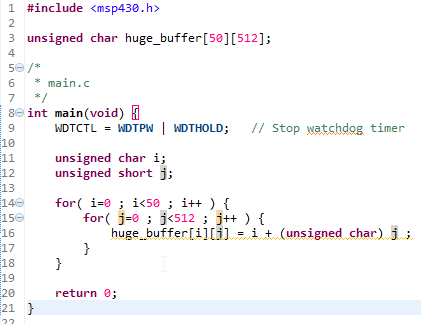Hi, I am having problems addressing when the data addresses are 17-bit+.
The warnings that I am getting are like this one: void UI_handleObjects( void ) I am using large data and large code model with CCS 4 Core Version: 4.1.3.00038,
Is this warning something to worry about? I assume it is. Hope someone out there has an answer. :) Thanks,
As a bonus question, how do I verify that CCS4 is running with the right license?
relocation from function "UI_handleObjects" to symbol "testObj" overflowed; the 17-bit relocated address 0x19000 is too large to encode in the 16-bit field (type = 'R_MSP_REL16' (161), file = "./UserInterface.obj"
{
char teststring[20] ;
testObj[0].captionObjNo = 1 ;
strcpy( testObj[1].data.string , "Test str" ) ;
}
How do I address data in 17-bit+ address ranges? Any examples how this is done?
Bo



